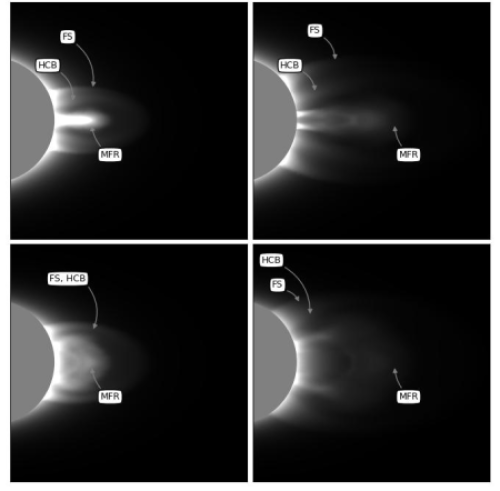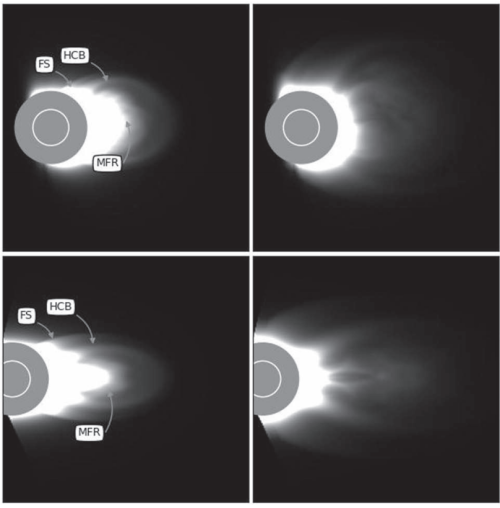Dr. MEI Zhixing in Yunnan Observatories of Chinese Academy of Sciences and his colleagues presented a large-scale 3D magnetohydrodynamic (MHD) simulation of eruptive magnetic flux-rope (MFR) , emphasizing the formation of three-part structure of the CME and its propagation in the large region. On November 7, The Astrophysical Journal published this work.
The coronal mass ejections (CMEs) observed by white-light coronagraphs, such as the Large Angle and Spectrometric Coronagraph (LASCO) C2/C3 and in the extreme-ultraviolet (EUV) passbands commonly exhibit the three-part structure, with the bright leading edge as the outermost part. For the CME leading edge, its physical nature is challenging to explore, although it has been studied extensively.
MEI Zhixing and his colleagues carried out a new numerical simulation to extend their forgoing simulation on the formation process of the leading edge, by incorporating on a radially stretched calculation grid in spherical coordination and the Parker analytical solution for solar wind. In the early stage, the new simulation almost repeats their previous results, i.e., the expanding eruptive MFR and associated CME bubble interact with the ambient magnetic field, which leads to the appearance of the helical current ribbon/boundary (HCB) wrapping around the MFR. The HCB can be interpreted as a possible mechanism of the CME leading edge. Later, the CME bubble propagates self-consistently to a larger region beyond a few solar radii from the solar center, similar to the early stage of evolution. The continuous growth and propagation of the CME bubbles leading to the HCB can be traced across the entire near-Sun region.

Large-scale evolution snapshots of current distribution on cut z=0 at different times (t=0.5, 1, 2, and 4), which demonstrate the expanding HCS,MFR, and FS in the near-Sun region. The units of time and length are 1.7 h and 69.6 km. (Image by MEI)
To directly compare with realistic white-light observations, they use the forward modeling method to create synthetic for Large Angle and Spectrometric Coronagraph (LASCO) C2/C3 and Mauna Loa Solar Observatory (MLSO) ground-based K-Coronagraph (K-cor). In synthetic images, the HCB can be seen as a bright front feature in the field of view of K-cor and LASCO C2 and C3 (fig 2 and fig 3) , which confirms their previous suggestion that HCB is the mechanism responsible for the CME leading edge.

Synthetic images in plane of sky with at times t=0.1 (left) and t=0.2 (right) for MLSO K-cor observation with field of view (FOV) 1.05-3 solar radii. (Image by MEI)

Synthetic images in plane of sky at times t = 0.5 (left) and t = 1(right) for LASCO C2 observation with FOV 2-7 solar radii. (Image by MEI)
Contact:
MEI Zhixing
Yunnan Observatories, CAS
E-mail: meizhixing@ynao.ac.cn